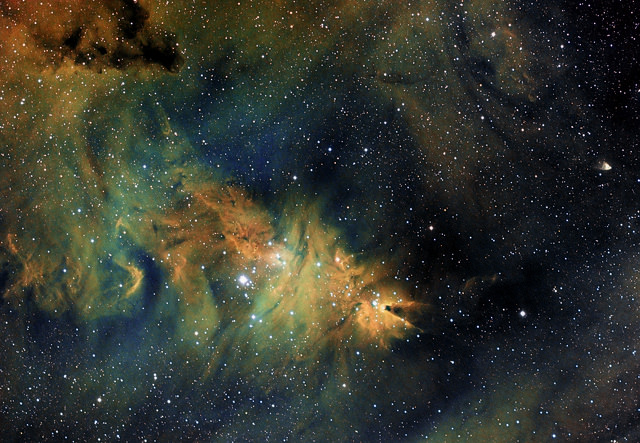[/caption]
Astrophotographer César Cantú from the Chilidog Observatory in Monterrey, Mexico calls this image “Pulp Fiction” for its violent areas of hot, deadly gases being expelled by the young stars, solar windstorms, huge accumulations of cosmic dust. But the two features show here are actually are named after things much more peaceful in nature: The Cone Nebula and the Christmas Tree Cluster. This open cluster of stars was discovered by William Herschel in 1785 and is cataloged as NGC 2264 and lies at a distance of 2,600 light years from our solar system.
“This is an H II region located in the constellation Monoceros,” César says, “a region with much stardust. The picture shows also the Hubble Variable Nebula, like a little flash at the top right. This is a vast field reached with the telescope and focal reducer FSQ106, which gives a focal length of 385mm with great resolution. The camera used was the FLI8300, with 4:30 hours of exposure.”
Click the image for access to a higher resolution version on César’s website.
Want to get your astrophoto featured on Universe Today? Join our Flickr group, post in our Forum or send us your images by email (this means you’re giving us permission to post them). Please explain what’s in the picture, when you took it, the equipment you used, etc.


